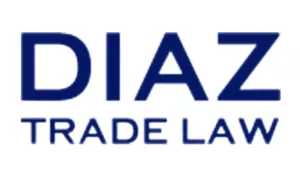Zero dollars or millions of dollars, that can be the difference in duties assessed depending on a country of origin determination.
Country of origin sounds simple – where did the product you are importing come from? However, in today's global manufacturing market, this determination isn't always straightforward.
Country of Origin & Substantial Transformation
Sometimes determining the country of origin is straightforward. If the entire product is born and bred in a single country, then that's the country of origin. But what about when inputs from various countries are shipped to another country where they are then manufactured together into a finished product? This is when things can get a bit more complicated.
Many US Free Trade Agreements (FTAs) stipulate the precise amount of inputs that must be from the country in question in order to qualify for a special, lower (usually zero percent) duty rate. Other times, what happens to those inputs and in what country, regardless of where said inputs were originally from, is what matters. So, if you are sourcing inputs from China, and transforming them into a finished product in a Mexico, then Mexico will likely be the country of origin for the product.
But there's a fine line here. Would snapping some Mexican door handles onto a car that is otherwise made in China, in Mexico, make it a car from Mexico? What if we painted the exterior? Put in the engine? Pursuant to 19 C.F.R. § 134.1(b), Customs will generally consider the 2nd country to be the country of origin only if those inputs underwent "substantial transformation" there. So, what makes a transformation "substantial"? For this, we head to the courts.
The Name, Character, Use Standard
In United States v. Gibson-Thomsen Co. (1940), the courts determined that importing a block brush and a wooden handle from Japan could result in an American-made toothbrush given the onshore processing that occurred–drilling holes, trimming brushes, polishing, stamping, etc. The courts found that these actions caused the constituent parts to lose their identity and be "substantially transformed" into a resulting product with a different "name, character, and use" than the imported components.
Those three things–"name, character, and use"–have set the standard for "substantial transformation" going forward. In cases that have followed, courts have considered this standard with respect to the costs/skill/complexity involved in further processing, whether or not there were changes to the "shape or material composition" of the inputs, and whether or not the components had predetermined functions.
But still, the "name, character, use" standard can still be a bit fuzzy. "Name" seems a little too easy, frankly–though, it's something that Customs will point out in rulings. What do they mean by "character"? In a case involving the maker of Skippy peanut butter, the courts determined that imported "peanut slurry" did not undergo "substantial transformation" to become "peanut butter" given that the slurry has the "essential character of the finished peanut butter."
These are just a few examples in a long history of Customs decisions. At the end of the day, the determination of whether goods underwent "substantial transformation" is subjective and is made on a case-by-case basis.
Made in the USA
If you are selling a product and claiming that it was "Made in the USA," –the Federal Trade Commission (FTC), steps in to enforce these claims. According to the FTC, "Made in the USA" means that "all or virtually all" the product has been made in America. That includes all significant parts, and processing and labor that go into making the product. Products should not contain any – or only negligible – foreign parts. The FTC actively enforces this rule and has fined companies millions of dollars for making false claims.
Don't Forget About Commerce
When it comes to determining country of origin, Customs isn't the only cook in the kitchen. In fact, when enforcing Anti-Dumping or Countervailing Duties (AD/CVD), the Commerce Dept. can come to its own determinations, regardless of what Customs thinks. That is, they don't have to rely on the "substantial transformation" test to determine a product's country of origin.
Unlawful Transshipment is a Serious Offense
If your goods do not meet the criteria for "substantial transformation" – you may be incorrectly identifying the country of origin, which is a serious violation of U.S. law. Penalties can include fines and even jail time for serious and repeated offenses. If you aren't sure, it's best to seek help in determining whether the processing that occurs in a third country is sufficient to constitute a "substantial transformation" so that you avoid illegally "transshipping" your products.
A Customs Attorney Can Help Your Business Navigate Customs Rules & Regulations
Diaz Trade Law has significant experience in a broad range of trade compliance matters. We can help ensure you are declaring the correct country of origin and also help in the mitigation process should a violation be discovered. Contact us at info@diaztradelaw.com or call us at 305-456-3830.
Learn more:
- Navigating CBP Regulations: Essential Practices for Import Success
- Building and Maintaining an Effective Import Compliance Plan
- Importing 101
The content of this article is intended to provide a general guide to the subject matter. Specialist advice should be sought about your specific circumstances.


